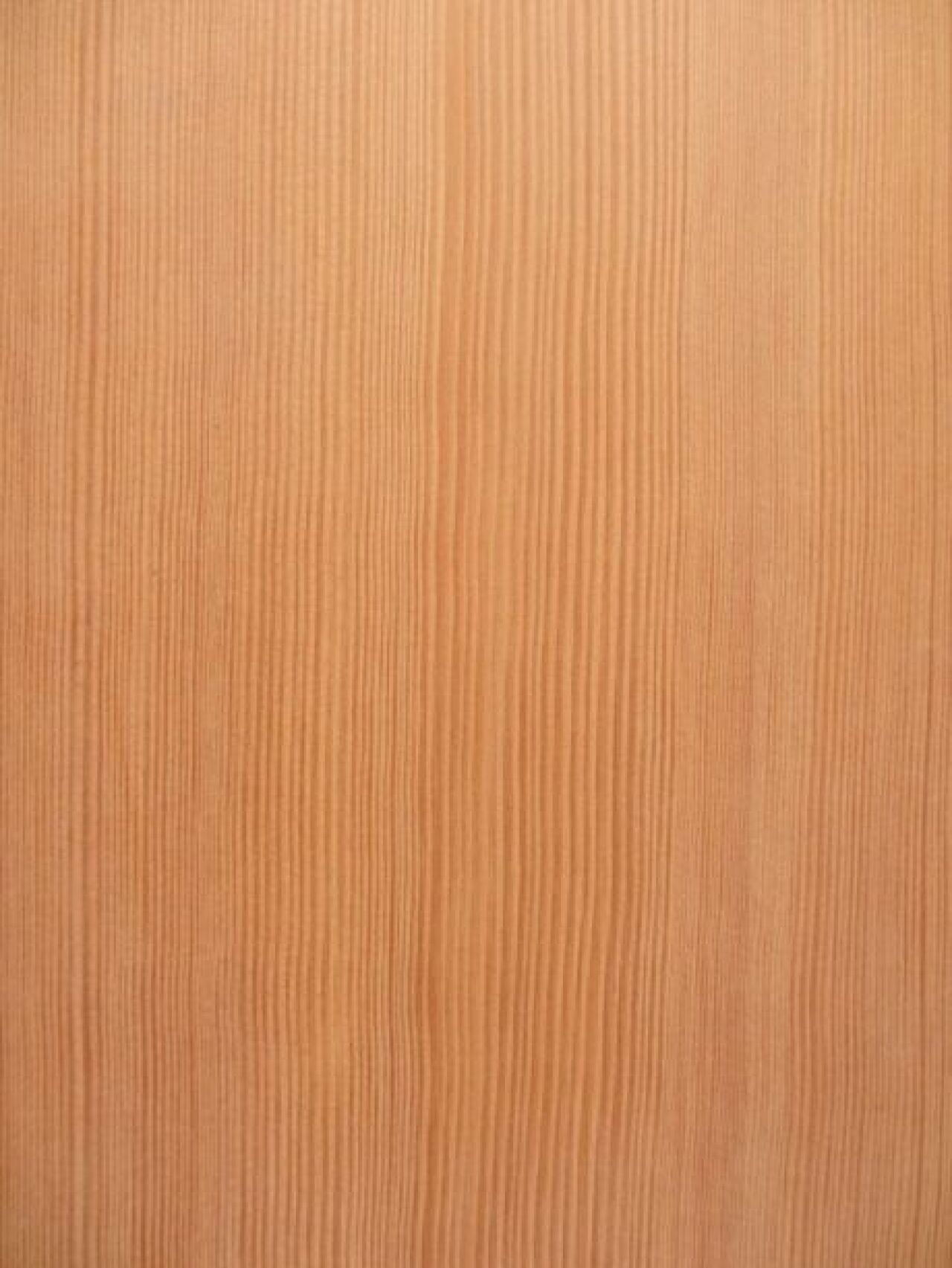The difference between old-growth and new-growth wood cannot be overstated.
Old-growth wood is better in every way, and historic millwork lasts as long as it does largely because of the quality of this wood.
Longleaf Yellow Pine

This is a southern softwood known for its strength and hardness. It is harder than many hardwoods.
Availability: Longleaf pine does not reseed itself and grow back quickly like other tree types. It is no longer as abundant as it once was. Second-growth longleaf pine is almost nonexistent. Because of its original abundance, it can still be found readily as a salvaged material (from an old building) or reclaimed (from a swamp or river). Longleaf pine can be very expensive. It is prized by floor companies because of its strength and beauty. Clear, figured, or vertical-grain longleaf pine is expensive. Salvaged longleaf pine is more affordable and more readily available.
Strengths: Very strong, beautiful grain, hard, not resistant.
Weakness: Can be unstable in changing climatic conditions (strong sun and high humidity). Can release sap under heat stress.
Best Use: Door and window frames, trim, exterior placement and floors.
Tidewater Red Cypress

This is a southern softwood that grew on the coast near saltwater, as opposed to inland or yellow cypress.
Availability: Good availability. Can be readily found and has more consistent quality than longleaf pine. Much of what we find at this time is actually reclaimed.
Strengths: Excellent performer in wet and humid conditions. Tight, stable grain.
Weakness: Needs to breathe and can move, especially on doors. Less likely to warp and bow than yellow pine.
Best Use: Windows, exterior siding and exterior trim. Sometimes doors can swell and move in stressful conditions. Tight, soft grain is excellent for fine millwork as well.
Western Douglas Fir

This West Coast wood is strong and a good exterior performer.
Availability: Old-growth lumber can be found about as readily as longleaf pine. Because it is such a strong wood, it found a lot of use as a structural member and thus is still being salvaged from old buildings. Although the old growth is better than the second-growth of Douglas fir, the latter is a very competent wood for most millwork applications. Second-growth lumber is straight and clear, and when oriented vertically, it performs quite well.
Strengths: Strong, good all-around performer. Less useful than cypress but equal to yellow pine in wet conditions. Growth rings can still be tight. The wood tends not to be knotty, and the grain is very straight.
Weakness: Did not have strong historic presence until after 1900. New Douglas fir is not as tight-grained, and vertical-grain stock should be used for new millwork.
Best Exterior Use: Trim, both exterior and interior. Doors and windows or other millwork.
Eastern White Pine

This grew in the North and East from Maine to Minnesota.
Availability: The hardest of the old-growth woods to find.
Strengths: Very easy to work with, it is stable, clear, and long-lasting.
Weakness: Has no apparent weakness.
Best Exterior Use: Good, all-around performer. Siding, exterior trim, doors, shutters and windows.
Effects the Climate has on Old-Growth Woods
Regional temperatures and climatic conditions must be considered on every project. It is natural to assume that local woods react more favorably to local conditions than to expect a foreign wood to adapt to a new environment. Thus, when we are milling wood for an historic project in the South, we prefer to use old-growth yellow pine and cypress, which adapt more favorably to the region’s humidity and heat.
In the West, the western pines and old-growth firs work well, as they can adjust to the dry air better than other woods. Thus, in the Northeast, old-growth eastern white pine is our choice for historic millwork projects.
Finally, regardless of the region, heat and sun can do tremendous damage to doors and millwork. When historic buildings were built, they did not have central heating and cooling systems. Today, when we replace these systems, we are actually adding new stress to historic millwork. Doors are especially susceptible, as they now can be very hot on the outside and cool on the inside. This creates tremendous pressure, then can cause a door to warp, twist, swell and fall apart.
